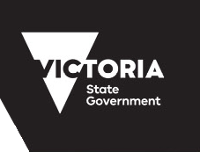Page 3 of 83 results.
-
Rivers
Rivers, creeks and streams Rivers, creeks and streams are some of the most valued and recognised natural features in the region, collectively referred to as rivers in this section. The... -
Groundwater
Below the surface Groundwater is water found in the cracks and spaces in soil, sand and rock. It has accumulated from rainfall over long timeframes, and the quality of groundwater... -
Sustainable primary production
A regional powerhouse of production With its rich soils, and reliable rainfall, the Glenelg Hopkins region is home to a vibrant food and fibre sector, including red meat production, grains... -
Land use
Agriculture, conservation and forestry The Glenelg Hopkins region is a diverse landscape, covering volcanic plains, grassy woodlands and eucalypt forests, productive Sea Country, significant rivers and extensive wetland systems. These... -
Habitat and Native Vegetation
From ancient sandstone and granite mountains The Glenelg Hopkins region is a diverse landscape ranging from ancient sandstone and granite mountains to expansive grassy plains, woodlands and forests, and a... -
Threatened native species
A need for protection and conservation Victoria is experiencing a period of rapid species decline1. Within the Glenelg Hopkins region, 295 native species are considered to be threatened with extinction.... -
Communities in ICM
Live, work, rest and play The Glenelg Hopkins region supports a permanent population of 137,000 with year-round tourism adding significantly to this number. The community includes people who live, work... -
Traditional Owners
A cultural landscape The Glenelg Hopkins region is a diverse landscape, covering volcanic plains, grassy woodlands and eucalypt forests, productive Sea Country, significant rivers and extensive wetland systems. These landscapes... -
Wetlands
Amazing and productive ecosystems In the Glenelg Hopkins region, wetlands range from deep permanent lakes to shallow ephemeral marshes or swamps. They can be fresh or saline, large or small.... -
Soil health
Soil is a non-renewable resource With about 81% of the Glenelg Hopkins catchment used for primary production, healthy soils are critical to the region’s future prosperity and are fundamental to...


